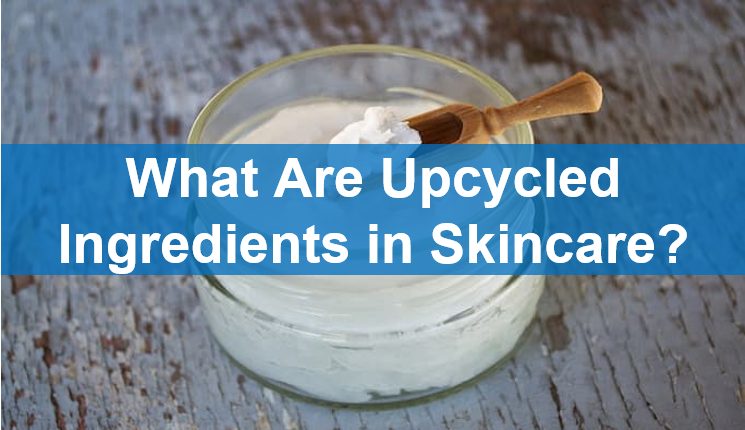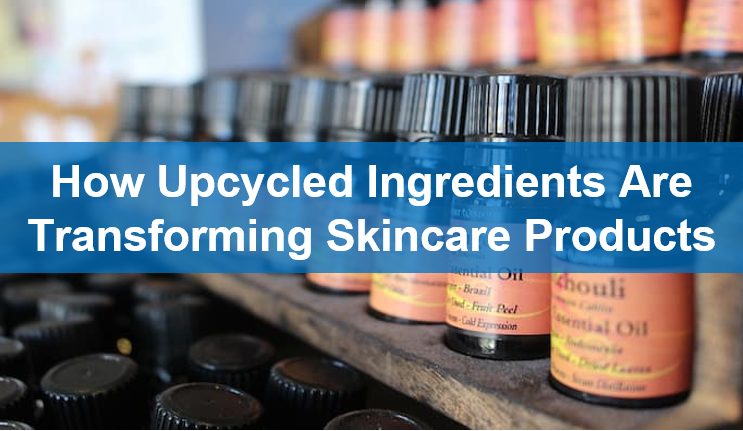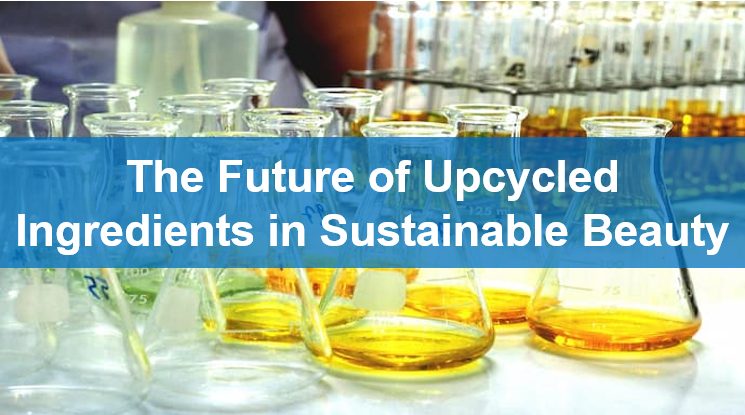
- HOME
- Cosmetic OEM Lab
What are upcycled ingredients?
What is the role of upcycled ingredients in cosmetics?
In today’s eco-conscious world, sustainability has become more than just a buzzword, especially in the beauty and skincare industry. As consumers become more informed and responsible, the demand for sustainable products has spurred innovation across the board. One emerging trend that is making waves is the use of upcycled ingredients in skincare. This concept goes beyond traditional recycling, offering not just a greener approach but also tangible benefits for your skin. Whether you’re a skincare aficionado or simply curious about green beauty, this article will walk you through everything you need to know about upcycled ingredients and how they are reshaping the future of skincare.
Contents

As the beauty industry looks for ways to reduce waste and create more sustainable products, the concept of upcycling has taken centre stage. But what does this mean for your skincare routine? Let’s dive into what upcycled ingredients are and why they are becoming a cornerstone of green beauty.
Upcycled ingredients are raw materials that would typically be discarded or considered waste in other industries but are repurposed and transformed into high-performance ingredients for new products. In skincare, this could mean using leftover coffee grounds from cafes, fruit peels from juice manufacturers, or grape seeds from winemaking to create nourishing oils, scrubs, and serums.
Unlike traditional ingredients that are harvested solely for cosmetic use, upcycled ingredients make use of what already exists, effectively reducing the environmental burden. This process not only supports circular economy principles but also highlights the beauty industry’s shift toward more responsible sourcing and manufacturing.
While the terms “upcycled” and “recycled” are sometimes used interchangeably, they refer to different processes. Recycled ingredients often involve reprocessing or breaking down materials to be reused in the same form or function. For example, recycled plastic bottles are melted down and remoulded into new packaging.
Upcycling, on the other hand, elevates the value of the waste material by transforming it into something more useful or of higher quality than the original. In skincare, this might involve extracting antioxidants from fruit waste or essential oils from discarded peels. It’s a creative and resourceful approach that delivers both environmental and functional benefits.
The use of upcycled ingredients is not just a trend; it’s a critical move toward reducing the enormous waste produced globally each year. In the food industry alone, one-third of all food goes to waste. Much of this “waste” is still rich in nutrients and bioactive compounds, making it ideal for skincare applications.
Incorporating upcycled ingredients helps reduce landfill waste, lowers greenhouse gas emissions, and promotes a more sustainable supply chain. More importantly, it allows beauty brands to offer high-performance products that align with modern consumers’ values — ethics, sustainability, and transparency.

As awareness around sustainable beauty grows, more brands are tapping into upcycled ingredients to create products that are not only kind to the planet but also incredibly effective. Let’s explore how these ingredients are being used and why they are changing the game in skincare.
There’s a growing list of upcycled ingredients making their way into skincare formulas, each bringing unique benefits. Some of the most common include:
These ingredients are not only resourceful but also offer a wide spectrum of skincare benefits.
One of the biggest myths in skincare is that sustainable or natural ingredients might be less effective. Upcycled ingredients challenge that idea head-on. Many of them are concentrated sources of active compounds such as polyphenols, vitamins, and essential fatty acids. Because they are derived from whole food waste or byproducts, they often retain high levels of bioavailability.
For instance, the antioxidants in used coffee grounds are still potent, helping to reduce inflammation and fight free radical damage. Similarly, grape seeds, once discarded as winemaking waste, yield oil that is light, non-comedogenic, and excellent for hydration and anti-aging.
Upcycled ingredients offer numerous skincare benefits, including:
In essence, these ingredients are not just sustainable, they’re skincare powerhouses that rival — and sometimes outperform — conventional actives.

The momentum behind green beauty is accelerating, and upcycled ingredients are at the forefront of this transformation. From consumer awareness to corporate responsibility, the future of skincare is being shaped by a growing demand for conscious choices and innovative practices.
More than ever, brands are under pressure to rethink their impact on the planet. As a result, sustainability has moved from the marketing department to the core of product development. Upcycled ingredients are a direct response to this shift, enabling brands to reduce waste, lower their carbon footprint, and create standout products.
This movement is also supported by better technologies and improved supply chain collaborations. Farmers, food manufacturers, and beauty formulators are now working hand-in-hand to turn byproducts into viable cosmetic activitiesactives.
Today’s consumers are educated and deeply concerned about where their products come from. They are no longer satisfied with vague claims or greenwashing. Instead, they seek transparency, authenticity, and real impact. Upcycled ingredients tick all those boxes.
They offer a tangible story — one of transformation, innovation, and sustainability — which deeply resonates with eco-conscious buyers. This emotional and ethical connection is driving a surge in popularity for products that clearly highlight upcycled components on their labels.
Forward-thinking skincare companies are now making upcycling part of their brand DNA. Some ways they are doing this include:
These strategies not only strengthen brand identity but also build long-term consumer loyalty in an increasingly values-driven marketplace.

The green beauty revolution is not just a passing trend, it is a fundamental shift in how we create, use, and think about skincare. Upcycled ingredients exemplify the perfect blend of sustainability, efficacy, and innovation. By turning waste into wonder, they offer a promising path forward for an industry under increasing environmental scrutiny.
As consumers, we have the power to support this movement by choosing brands that prioritize upcycled formulations and transparency. And as the industry continues to evolve, it’s clear that the future of beauty is not only skin-deep but also deeply rooted in responsibility and purpose.
Whether you’re just discovering the world of upcycled ingredients or already a committed green beauty advocate, now is the perfect time to embrace a skincare routine that looks good, feels good, and does good for the planet.
For further information, please contact us.